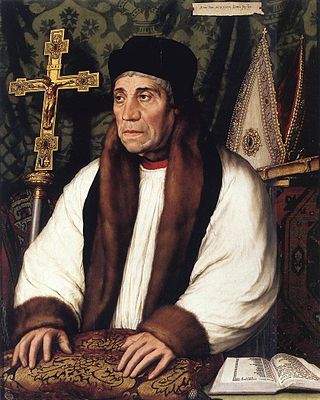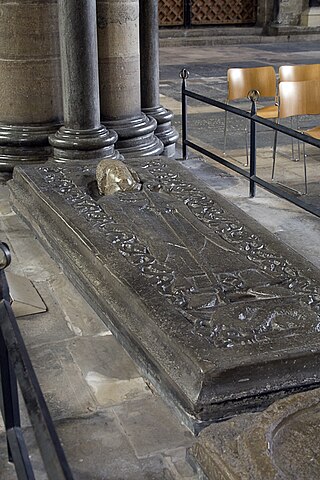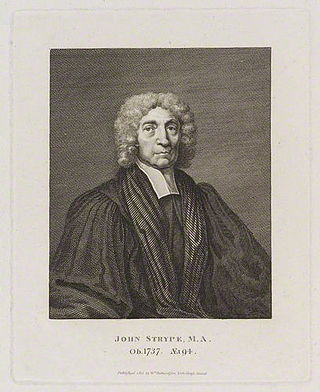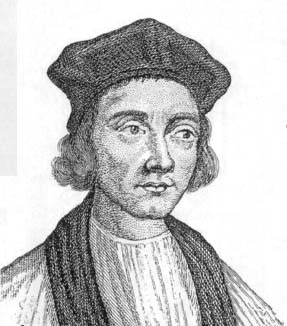
William Warham was the Archbishop of Canterbury from 1503 to his death.

Thomas Bourchier was a medieval English cardinal, Archbishop of Canterbury, and Lord Chancellor of England.

John Kemp was a medieval English cardinal, Archbishop of Canterbury, and Lord Chancellor of England.
William Courtenay was Archbishop of Canterbury (1381–1396), having previously been Bishop of Hereford and Bishop of London.

Thomas Tenison was an English church leader, Archbishop of Canterbury from 1694 until his death. During his primacy, he crowned two British monarchs.

Roger of Salisbury, was a Norman medieval bishop of Salisbury and the seventh Lord Chancellor and Lord Keeper of England.

William Paget, 1st Baron Paget of Beaudesert, was an English statesman and accountant who held prominent positions in the service of Henry VIII, Edward VI and Mary I.

John Strype was an English clergyman, historian and biographer from London. He became a merchant when settling in Petticoat Lane. In his twenties, he became perpetual curate of Theydon Bois, Essex and later became curate of Leyton; this allowed him direct correspondence with several highly notable ecclesiastical figures of his time. He wrote extensively in his later years.

Nicholas Heath was the last Roman Catholic Archbishop of York and Lord Chancellor. He previously served as Bishop of Worcester.

Cuthbert Tunstall was an English Scholastic, church leader, diplomat, administrator and royal adviser. He served as Prince-Bishop of Durham during the reigns of Henry VIII, Edward VI, Mary I and Elizabeth I.

Thomas Beckington was the Bishop of Bath and Wells and King's Secretary in medieval England under Henry VI.
Thomas Thirlby, was the first and only bishop of Westminster (1540–50), and afterwards successively bishop of Norwich (1550–54) and bishop of Ely (1554–59). While he acquiesced in the Henrician schism, with its rejection in principle of the Roman papacy, he remained otherwise loyal to the doctrine of the Roman Catholic Church during the English Reformation.
Thomas Goldwell was an English Catholic clergyman, Bishop of Saint Asaph, the last of those Catholic bishops who had refused to accept the English Reformation.
Bishop Rowland Lee was an English clergyman who served as Bishop of Coventry and Lichfield 1534–43 and also as Lord President of the Marches under King Henry VIII.

Nicholas Wotton was an English diplomat, cleric and courtier. He served as Dean of York and Royal Envoy to Charles V, Holy Roman Emperor.
Richard Courtenay was an English prelate and university chancellor, who served as Bishop of Norwich from 1413 to 1415.

Thomas Vaux, 2nd Baron Vaux of Harrowden KB, English poet, was the eldest son of Nicholas Vaux, 1st Baron Vaux and his second wife, Anne Green, daughter of Sir Thomas Green, Lord of Nortons Green, and Joan Fogge. He was educated at Cambridge University. His mother was the maternal aunt of queen consort Catherine Parr, while his wife, Elizabeth Cheney, was her paternal cousin through Catherine's father's sister, Anne Parr.
John Capon, aliasJohn Salcot was a Benedictine monk who became bishop of Bangor, then bishop of Salisbury under Henry VIII. He is often referred to as John Salcot alias Capon.
Richard Nykke became bishop of Norwich under Pope Alexander VI in 1515. Norwich at this time was the second-largest conurbation in England, after London.

In the Kingdom of England, the title of Secretary of State came into being near the end of the reign of Queen Elizabeth I (1558–1603), the usual title before that having been King's Clerk, King's Secretary, or Principal Secretary.














